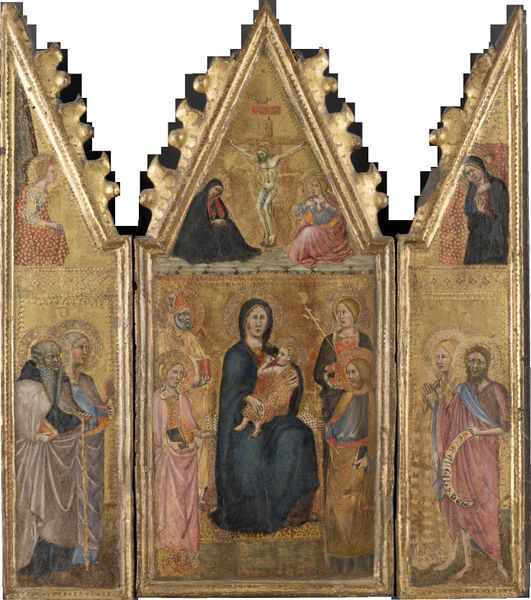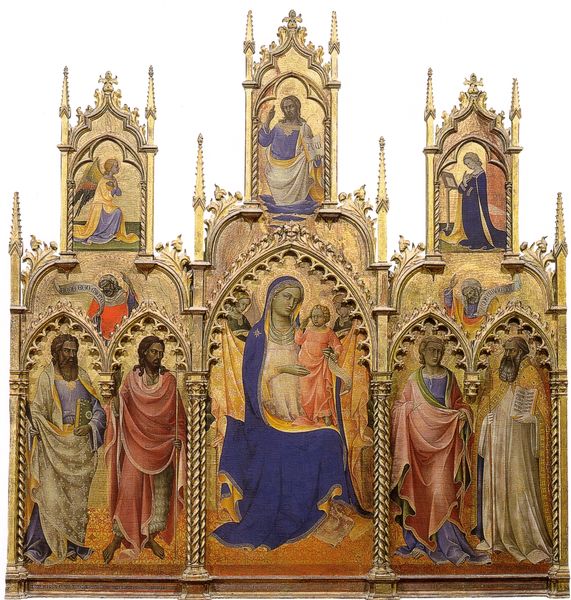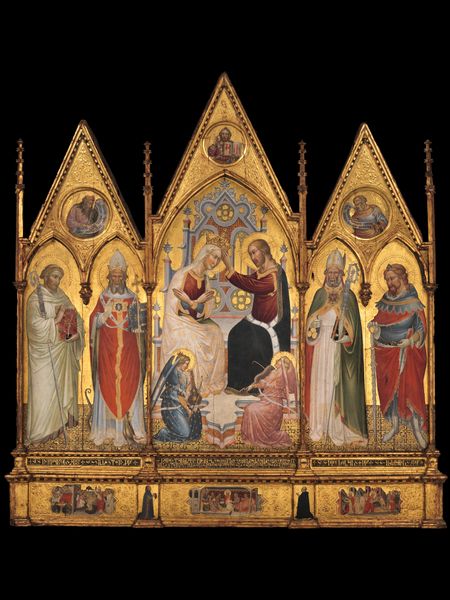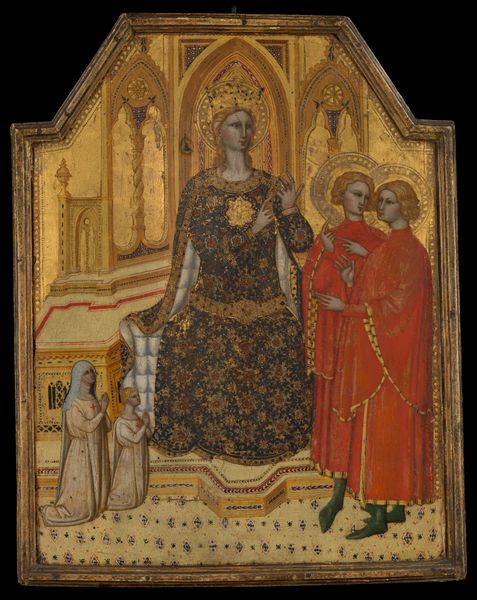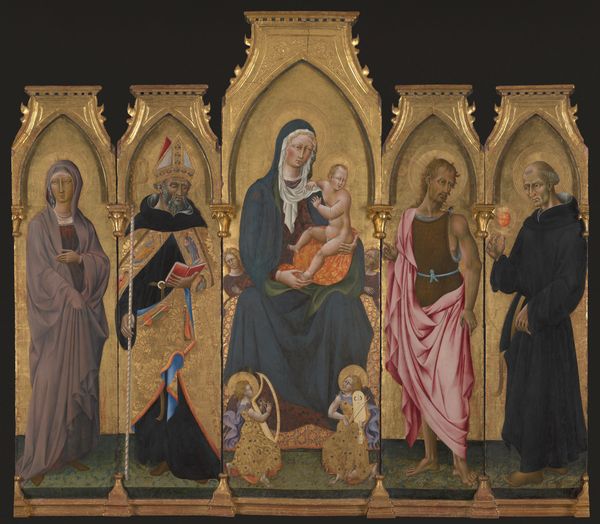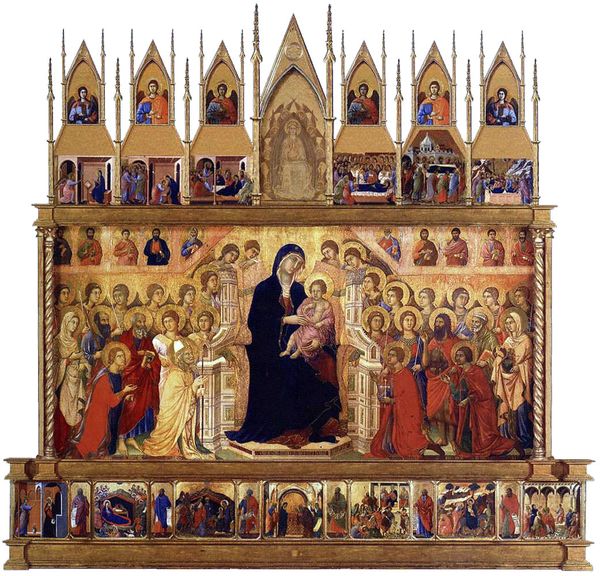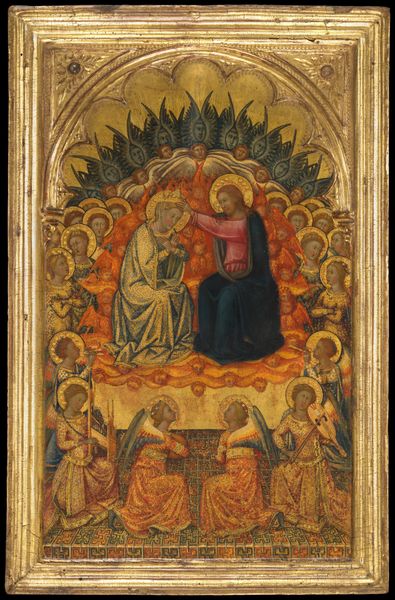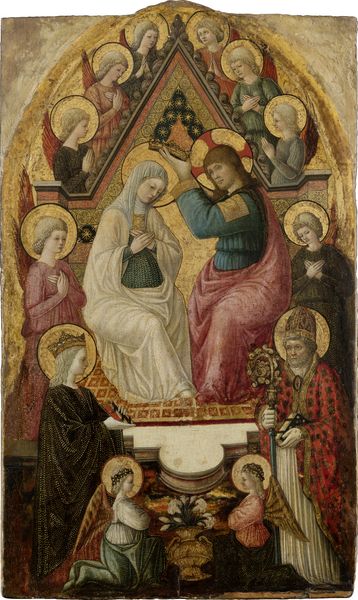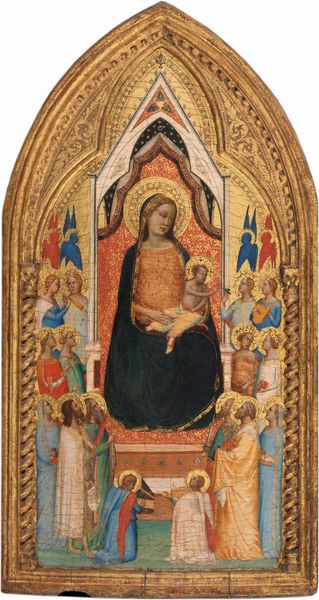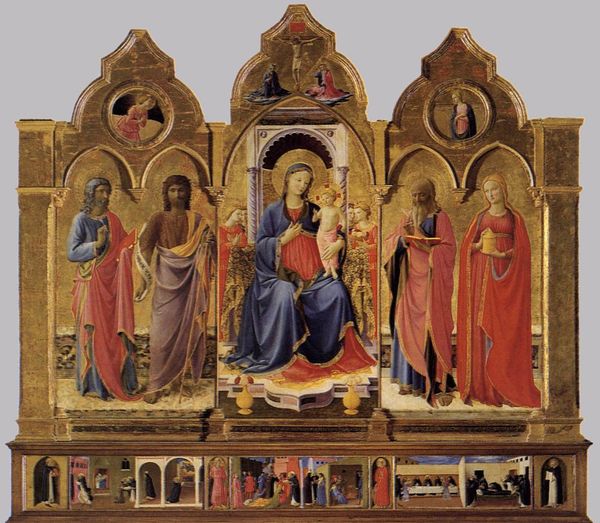
panel, painting, oil-paint
#
portrait
#
panel
#
narrative-art
#
painting
#
prophet
#
oil-paint
#
figuration
#
oil painting
#
history-painting
#
italian-renaissance
#
early-renaissance
Dimensions: 2402 x 256 cm
Copyright: Public domain
Curator: Today, we're looking at "Madonna of the Snow Altarpiece" created circa 1432 by Il Sassetta. It's an oil painting on a wood panel, showcasing the Italian Renaissance style. Editor: It shimmers, doesn’t it? Gold everywhere, like someone spilled sunshine. It’s both regal and incredibly human at the same time. You can practically feel the chill of the air. Curator: It's important to consider this piece within the framework of its time. The iconography draws heavily on established religious symbolism, representing the Virgin Mary as an intercessor, a powerful maternal figure but also one entrenched within a very specific social hierarchy. The use of gold reflects not just wealth, but also the divine light, and that has consequences for how we read those surrounding her. Editor: I see it, but I also see beyond it. It’s about safety, really. Mary's dark robe becomes almost like a protective blanket against all that potential for chaos that you feel if you’ve ever lived anywhere cold. The child doesn’t quite seem at peace with it all, and she does. That quiet power in her expression makes the piece so touching for me. Curator: The positioning of figures like Saint Francis and John the Baptist in the composition speaks to the role of the altarpiece in communal prayer and the values the artwork would’ve upheld during the Italian Renaissance. Note how the painting tells various scenes below the figures on the main plane. The bottom illustrates Saint Mary requesting to found a chapel in the Roman snow, illustrating how she will safeguard them against adversity. It reinforces social power by imbuing it in a higher cause. Editor: But consider this: even within that prescribed power structure, art finds ways of hinting. See that gentle touch, her almost exhausted gaze—there's love transcending the icon. It’s as though Sassetta couldn’t resist putting a bit of real life into an extremely rigid frame. To the extent that love like this might be seen as “good work,” what can that tell us about its true function and the women that performed it during the Renaissance? Curator: That’s a compelling thought about gendered labor, indeed. The piece also shows us much about patronage and artistic production during that era. We can trace these values, like you identified with care and protection, as they perpetuate social norms but are complicated through everyday human actions. Editor: Exactly! I'll look at a piece like this now and understand it a bit more, because there's a way in which all art can transcend what we intend for it to be. And how it moves people forward from those established starting points!
Comments
No comments
Be the first to comment and join the conversation on the ultimate creative platform.
